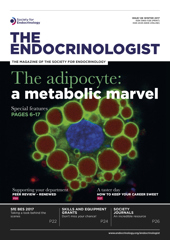Obesity and type 2 diabetes are major global scourges, with both genetic and environmental causes. Lifestyle interventions reduce the risk of developing diabetes in high risk people, and may slow down progression once the disease is diagnosed, but there is considerable variability in response to such interventions. Much of this may be related to variable adherence and compensatory behaviours. However, there is compelling evidence that a person’s glycaemic response to food is likely to be driven by biological variants that are personal. Metabolic adaptation to exercise has also been convincingly demonstrated. As Paul Franks explains in this article, continued emphasis on discovering biomarkers that determine individual responses to lifestyle factors will probably lead to the design of robust lifestyle interventions that are more personalised and more effective than today’s standard-of-care.
Diet modification is the standard-of-care for new-onset type 2 diabetes in most western healthcare systems. However, dietary intervention alone is often insufficient to prevent the disease from progressing, and treatment with single or combined drug therapies typically ensues, eventually progressing to replacement insulin for about one-third of patients.1
The major global drug companies spent well over US$100 billion in 2013 on sales and marketing and on research and development.2 Comparable statistics are unavailable for lifestyle medicine, but the level of investment is likely to be orders of magnitude less, because generating revenue from lifestyle medicine is far more challenging than for drugs, not least because patenting lifestyle ‘products’ is more challenging than for new molecules and pharmaceuticals, where the intellectual property rights can be clearly defined.
Despite the relatively modest funding for lifestyle medicine, the major intervention trials show that diet, exercise and weight loss can help ameliorate diabetes progression.3 Nevertheless, there is a great deal we do not know about how lifestyle can be used to combat obesity and diabetes on an individual level, which is reflected in the modest degree (about 36 months) to which tightly controlled lifestyle interventions delay the onset of diabetes in high risk people. The impact is less in real-world studies,3 which may be due to the unwillingness or inability of patients and their clinicians to persist with lifestyle therapy, as well as the ineffectiveness of the interventions in some patients.
‘The potential to improve the precision of lifestyle interventions is likely to far outweigh the potential for drug therapies in type 2 diabetes, primarily because diet and exercise have wide-ranging effects on energy metabolism with few, if any, serious side effects in most patients.’
Importantly, adherence and effectiveness are reciprocally related, as people who see little or no benefit are less likely to continue to adhere, and lack of adherence undermines the effectiveness of interventions. This emphasises the need to treat patients with the therapies that are best suited to their ‘biotype’, as well as determining how to deliver these interventions in ways that maximise long-term compliance.
EXPLORING INDIVIDUALITY
Lifestyle interventions that induce weight loss for diabetes prevention are most effective in people who are glucose intolerant (i.e. whose postprandial glucose is elevated), and less effective in those with isolated fasting glucose.4 This is probably due to the underlying causes of these two types of dysglycaemia: the former is attributable mainly to peripheral insulin resistance, which can often be ameliorated through weight loss, whereas the latter is primarily the consequence of excessive hepatic gluconeogenesis.
Nevertheless, sustained hypocaloric diets (around 800kCal/day) can also profoundly improve fasting glycaemia too, even in people with manifest diabetes, by virtue of reductions in liver fat content and corresponding improvements in liver insulin sensitivity.5 The problem is that long term adherence to such diets is obviously difficult and only highly motivated patients are likely to benefit from this strategy.
The potential to improve the precision of lifestyle interventions is likely to far outweigh the potential for drug therapies in type 2 diabetes, primarily because diet and exercise have wide-ranging effects on energy metabolism with few, if any, serious side effects in most patients. By contrast, most antidiabetic drugs target specific pathways and cannot be tolerated or cause adverse events in some patients.
The notion of optimising lifestyle interventions by designing these to fit the biological characteristics of an individual patient is predicated on there being high between-person variability and low within-person variability in the response to the components of the intervention. The measure of ‘response’ also needs to be clinically relevant, for which biomarkers with good predictive ability should be available, safe and scalable, if the approach is to be used in the public health setting.
There are multiple reports of high between-person variability in response to diet and exercise interventions,6 but it is often impossible to separate true between-person response variability from error, and few studies have demonstrated that the response estimates are consistent within an individual over time. Indeed, much of the apparent variability in response to lifestyle interventions is likely to be artefactual, as discussed elsewhere.7,8 Nevertheless, three recent studies of diet9,10 and exercise11 provide compelling evidence that an individual’s characteristics influence the metabolic response to diet and exercise.
THE IMPACT OF DIET
In people with diabetes, minimising variability in glycaemic response to food is a major feature of the patient’s self-care regime, as very high glucose concentrations can be harmful to the insulin-producing (β-)cells in the pancreas and to the vasculature, and very low glucose can lead to loss of consciousness.
In the first of the two diet studies,9 diet patterns and glycaemic response were observed in 800 adults during 1 week. Participants wore continuous glucose monitors, detailed information on diet was collected via a mobile app, and metagenomic sequences were obtained from stool. Within the 47,000 meals consumed during the period, one standardised meal each day (including 50g carbohydrate) was provided to each participant.
‘Harnessing individual-level biological variant data to optimise diets has already proved valuable for the regulation of blood glucose, and may prove of further value for other diabetes-related traits, including weight change.’
The authors observed high between-person variability in response, but relatively low within-person variability, suggesting that the glycaemic response to food is driven by personal factors. They then derived a machine learning algorithm to predict glycaemic response to each meal based on the data collected in the observational phase, and designed personalised diet interventions, to which 26 adults were randomised in order to demonstrate that a person’s glucose variation can be manipulated by personalising their diets. A core feature of the algorithm was the gut microbiome sequence data.
In a follow-up study, the same group undertook a randomised trial of white and sourdough bread to determine whether this influenced clinical response parameters, including blood glucose excursions after a 75g oral glucose load.10 Although no difference was observed in the effects of the different bread types, high variation in glycaemic response to bread was observed between individuals, with relatively low inter-individual variation. As in the earlier trial, the authors were able to derive algorithms using microbiome sequence data to predict an individual’s glycaemic response to bread.
RESPONSE TO EXERCISE
There has been much written about exercise responders and nonresponders and the biological basis to these adaptations.12 One of the earliest published analyses supporting this idea came from the HERITAGE Study, an exercise intervention trial in which participants were assessed at the beginning and end of a 20-week exercise intervention.13
The authors reported large inter-individual variability in response to exercise for aerobic fitness adaptation, although the design of the study limited the extent to which the key sources of variability (i.e. biological variation, compliance and technical error) could be distinguished. Because the study had only one follow-up assessment (at the end of the trial), the within-individual variability in response could not be accurately quantified. Nevertheless, many have interpreted these results to mean that some people do not respond to exercise (we discuss come of the caveats underlying this interpretation elsewhere7).
To test the ‘non-responder’ hypothesis, Montero and Lundby undertook a 6-week exercise intervention, during which aerobic fitness was repeatedly assessed.11 The authors eloquently demonstrated that some participants were highly responsive to exercise, whereas others responded with only small improvements in fitness, yet none of the participants was a true ‘non-responder’.
Thus, amongst the vast literature on the biological basis of individual responses to diet and exercise, there are a few well-conducted trials that provide strong evidence that response predictors are personal, and in some instances quantifiable. Harnessing individual-level biological variant data to optimise diets has already proved valuable for the regulation of blood glucose,9,10 and may prove of further value for other diabetes-related traits, including weight change. Such applications could prove valuable when lifestyle medicine is used to prevent or treat type 2 diabetes and obesity.
Paul W Franks, Genetic and Molecular Epidemiology Unit, Lund University, Skåne University Hospital, Malmö, Sweden and Department of Nutrition, Harvard School of Public Health, Boston, MA, USA
REFERENCES
- Centers for Disease Control and Prevention 2014 National Diabetes Statistics Report www.thefdha.org/pdf/diabetes.pdf.
- Swanson A 2015 The Washington Post http://wapo.st/2zb4kpu.
- Terranova CO et al. 2015 Diabetes Obesity & Metabolism 17 371–378.
- Zhang X et al. 2017 Diabetes Research & Clinical Practice 123 149–164.
- Steven S et al. 2016 Diabetes Care 39 808–815.
- Bohm A et al. 2016 Endocrine 51 390–401.
- Franks PW & Poveda A 2017 Diabetologia 60 784–792.
- Mutie PM et al. 2017 BMC Medicine 15 171.
- Zeevi D et al. 2015 Cell 163 1079–1094.
- Korem T et al. 2017 Cell Metabolism 25 1243–1253.
- Montero D & Lundby C 2017 Journal of Physiology 595 3377–3387.
- Sparks LM 2017 Diabetologia 60 2329–2336.
- Bouchard C & Rankinen T 2001 Medicine & Science in Sports & Exercise 33 Suppl 6 S446–S451, discussion S452–S453.






